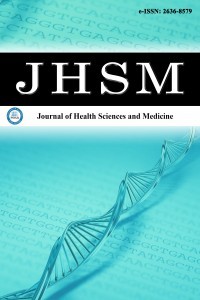The effect of COVID-19 pandemic on stroke admissions to a city
The effect of COVID-19 pandemic on stroke admissions to a city
Acute stroke, COVID-19 pandemic, quarantine,
___
- Ciotti M, Ciccozzi M, Terrinoni A, Jiang W-C, Wang C-B, Bernardini S. The COVID-19 pandemic. Crit Rev Clin Lab Sci. 2020;57(6):365-388.
- Katan M, Luft A. Global burden of stroke. Thieme Medical Publishers; 2018:208-211.
- Wang H, Naghavi M, Allen C, et al. Global, regional, and national life expectancy, all-cause mortality, and cause-specific mortality for 249 causes of death, 1980–2015: a systematic analysis for the Global Burden of Disease Study 2015. Lancet. 2016;388(10053):1459-1544.
- Feigin VL, Abajobir AA, Abate KH, et al. Global, regional, and national burden of neurological disorders during 1990–2015: a systematic analysis for the Global Burden of Disease Study 2015. Lancet Neurol. 2017;16(11):877-897.
- Feigin VL, Norrving B, Mensah GA. Global burden of stroke. Circulation Res. 2017;120(3):439-448.
- Benjamin EJ, Muntner P, Alonso A, et al. Heart disease and stroke statistics—2019 update: a report from the American Heart Association. Circulation. 2019;139(10):e56-e528.
- Wasserman J, Perry J, Dowlatshahi D, et al. Stratified, urgent care for transient ischemic attack results in low stroke rates. Stroke. 2010;41(11):2601-2605.
- Nogueira RG, Abdalkader M, Qureshi MM, et al. Global impact of COVID-19 on stroke care. Int J Stroke. 2021;16(5):573-584. doi. 10.1177/1747493021991652
- Yaghi S, Ishida K, Torres J, et al. SARS-CoV-2 and stroke in a New York healthcare system. Stroke. 2020;51(7):2002-2011.
- Siegler J, Heslin M, Thau L, Smith A, Jovin T. Falling stroke rates during COVID-19 pandemic at a comprehensive stroke center. J Stroke Cerebrovasc Dis. 2020;29(8):104953.
- Teo K-C, Leung WC, Wong Y-K, et al. Delays in stroke onset to hospital arrival time during COVID-19. Stroke. 2020;51(7):2228-2231.
- Montaner J, Barragán-Prieto A, Pérez-Sánchez S, et al. Break in the stroke chain of survival due to COVID-19. Stroke. 2020;51(8):2307-2314.
- Diegoli H, Magalhães PS, Martins SC, et al. Decrease in hospital admissions for transient ischemic attack, mild, and moderate stroke during the COVID-19 era. Stroke. 2020;51(8):2315-2321.
- Hoyer C, Ebert A, Huttner HB, et al. Acute stroke in times of the COVID-19 pandemic: a multicenter study. Stroke. 2020;51(7):2224-2227.
- Pujol-Lereis VA, Flores A, Barboza MA, et al. COVID-19 lockdown effects on acute stroke care in Latin America. J Stroke Cerebrovasc Dis. 2021;30(9):105985.
- Yayın Aralığı: Yılda 6 Sayı
- Başlangıç: 2018
- Yayıncı: MediHealth Academy Yayıncılık
Evaluation of the readability of consent forms used in cardiovascular surgery clinics
Can hematologic parameters predict isolated oligohydramnios and isolated polyhydramnios?
Mustafa Bertan DEMİR, Şadan TUTUŞ, Cevat Rifat CÜNDÜBEY
Hüseyin GÖBÜT, Çağrı BÜYÜKKASAP
Tuğba GEDİK, Nuri KİRAZ, Hülya DURAN
Mehmet Çağatay GÜRKÖK, Ozlemoner ÖNER, Ferhan DEMİRER AYDEMİR, Özge KUZGUN, Alkan DURMUŞ, Sabri ERDEM, Necati GÖKMEN
